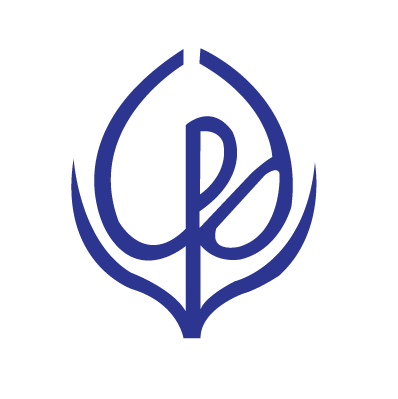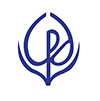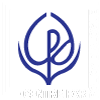Originally posted in The Financial Express on 1 February 2025
State of the Bangladesh Economy in H1 of FY2024-25
The economy of Bangladesh has been facing considerable challenges over the last couple of years which have weakened the macroeconomic stability. Despite claims of economic growth by the fallen regime under the previous autocratic government, the economic situation continued to be vulnerable. This was evidenced by, inter alia, subdued revenue mobilisation, resulting in a shrinking fiscal space, a high reliance on government borrowing from commercial banks to finance the budget deficit, tightened liquidity in scheduled banks, elevated prices of essential goods, and a deteriorating external sector balance and foreign exchange reserves. Regrettably, the macroeconomic dynamics of the ongoing FY2024-25 (FY2025) show very little signs of improvement.
The interim government, formed on August 8, 2024, following the student-people uprising in July-August 2024 has taken a number of economic measures, including a plethora of reform initiatives, in view of the attendant challenges. However, these initiatives are yet to result in substantive changes to give relief to the people and businesses. Given the multi-dimensionality of ongoing economic challenges, there is a need to undertake measures targeting all sectors and all stakeholders. It is reckoned that the current situation needs to be addressed through a three-pronged approach, taking into cognisance both the immediate and medium-term impacts. These include (i) addressing the day-to-day challenges of common people to give them some respite to recover from economic shocks, (ii) addressing the accumulated challenges over the years, and (iii) undertaking and sustaining reforms to strengthen the macro fundamentals.
It must be recognised that the underlying reason behind the July movement in 2024 was the lack of job opportunities due to low investment. The discriminatory policies of the previous government aggravated the unemployment situation and enhanced inequality. Hence the July movement turned into the establishment of a discrimination-free society through reforms in the existing institutions of the state. Economic policy reform is one of the major steps for reducing inequality and improving inclusivity.
CPD presents the current State of the Bangladesh Economy analysis in view of the above context. It presents concrete recommendations to reform some of the important sectors of the economy. It is expected that the interim government will undertake a few immediate measures while the future political government will continue the reform measures.

FISCAL REALITIES IN BANGLADESH: The ongoing FY2025, by all means, has been an atypical year. This fiscal year will always be marked as the year of mass uprising and the fall of an autocratic regime. As such, the macro-fiscal correlates will have to be assessed in the broader context of changes warranted in the socioeconomic scenario. Taking this into cognisance, the present section examines the current dynamics within the fiscal framework of Bangladesh and suggests some guiding principles for the path ahead.
Revenue Mobilisation. According to the Ministry of Finance (MoF) data, total revenue collection increased by a marginal 3.7 per cent during the July-October period of FY25. This exhibits a considerable dip in performance when compared to the corresponding figure of FY24, where total revenue mobilisation recorded a 17.7 per cent growth. The current revenue mobilisation trend indicates that, a whopping 45.1 per cent growth will be required during the remainder of FY25 if the annual growth target of 32.4 per cent is to be attained. This is a feat that is highly unlikely to be achieved.
As can be evinced from Figure-1, tax revenue, which constitutes 91.5 per cent of the total targeted revenue, recorded a negative (-) 2.0 per cent growth during July-October of FY25. Both the subcomponents of tax revenue viz. NBR tax and non-NBR tax attained negative growth during the aforementioned period. Within the components of NBR tax, collection of value added tax (VAT), and supplementary duty (SD) declined substantially while that of import duty also decreased. While the political turmoil during the months of July and August of 2024 have contributed to this, the subsequent slowdown in the implementation of the annual development programme (ADP) has also played a part. The overall growth in revenue mobilisation was driven by non-tax revenue. Within the components of non-tax revenue, government’s interest earning was the most significant driver (MoF, 2025).
The underwhelming performance in terms of tax revenue collection has perhaps driven the government to consider upward adjustments in the VAT and SD structure of more than 100 products and services – many of which are consumed by the limited and lower income people. At the same time, the pressure of adhering to the conditionalities set forth by the International Monetary Fund (IMF) as part of its US$ 4.7 billion loan cannot be discounted in this regard. After some initial backlash, the VAT and SD hikes in several products have been discarded. However, the decision to impose higher indirect taxes during the time of high inflation, which indiscriminately impacts affluent and less affluent sections of the society, cannot be justified.
Public Expenditure. As the MoF data exhibits, overall budget utilisation was 18.1 per cent during the July-October period of FY25 (MoF, 2025). The corresponding figure for FY24 was lower – at 16.0 per cent. ADP implementation rate was on the lower side – only 6.1 per cent of the allocated amount was spent during the July-October period of FY2025 (the corresponding figure for FY24 was 8.9 per cent). This, perhaps, is owing to the political turmoil during July-August 2024 as well as the subsequent reprioritisation and re-evaluation of development projects. The reshuffling of the administration has also contributed to this phenomenon. However, non-ADP expenditure exhibited an upward trend. During July-October of FY25, utilisation of the non-ADP budget reached 24.0 per cent while the corresponding figure for FY24 was 19.8 per cent. This implies that nearly an additional Tk 300 billion was spent to carry out the non-ADP activities of the budget. Within the components of non-ADP expenditure, domestic interest payment was the major driver of the uptick – accounting for nearly 80 per cent of the additional non-ADP expenditure. Expenditure owing to incentives also showed some uptick, with the corresponding share in additional non-ADP expenditure reaching 10.0 per cent. Other sources such as pay and allowances of the government employees might add to this once the proposed dearness allowance comes into effect.
While the MoF provides updates regarding ADP implementation till October FY25, the Implementation Monitoring and Evaluation Division (IMED) of the Ministry of Planning provides a more up-to-date picture. According to IMED data, the ADP implementation rate against the original budget allocation reached 17.3 per cent during July-December of FY25 – the lowest in the last ten years (Figure 2.2).
Within the components of ADP, utilisation of both ‘Taka’ (the part of ADP which is financed by domestic resources), and project aid reached their historical lows during the July-December period of FY25. While the implementation rate of the former reached 15.8 per cent, for the latter this rate was 19.6 per cent. The corresponding rates for FY24 were 20.4 per cent and 26.1 per cent, respectively. The slowdown in public investment amidst a downturn in private investment (discussed in detail in Section 5) is a matter of concern from the perspective of achieving a healthy economic growth.
The top ten ministries/divisions which received the highest allocation account for 66.6 per cent of the total ADP allocation for FY25 (the corresponding figure for FY24 was 70.2 per cent). Of these ten, the ADP implementation of five was below the average level. These include the Road Transport and Highways Division, Ministry of Primary and Mass Education, Health Services Division, Secondary and Higher Education Division, and Ministry of Water Transport. Regrettably, the latest available data shows that the trend of poor ADP implementation in the education and health sectors has continued in FY25. It is also a matter of concern that average ADP implementation rate of government ministries/divisions which reside outside the top ten has almost halved – from 20.5 per cent during July-December FY24 to 10.3 per cent per cent during July-December FY25.
Deficit and its Financing. As per the MoF data, budget deficit increased substantially during the July-October period of FY25. Budget deficit (excluding grants) stood at Tk. 128.86 billion at the end of October FY25. The corresponding time period of FY24 had a budget surplus of Tk 29.78 billion. This is perhaps attributable to marginal increase in revenue collection coupled with substantial increases in non-ADP expenditure.
Government’s net borrowing from foreign sources declined further – from (-) Tk 3.63 billion during July-October of FY24 to (-) Tk 56.68 billion during July-October of FY25. This happened due to a combination of lower inflow of foreign funds and higher amortisation of existing foreign loans.
Government’s net borrowing from the banking system was Tk 156.51 billion (11.4 per cent of the budgetary target) during July-October of FY25. On the other hand, Tk 59.11 billion was borrowed from the banking system during the corresponding period of FY2024. This increase in bank borrowing by the government might limit the availability of funds for the private sector. Government’s net borrowing from the non-banking sources increased to Tk 27.99 billion during July-October of FY25. On the contrary, the government repaid Tk 93.26 billion to non-banking sources during the same period of the previous fiscal year. Within the non-banking sources, net sale of National Savings Certificates experienced a sharp rise (95.3 per cent of the budgetary target) coupled with substantial decline in the sale of other instruments (e.g., treasury bills/bonds). Therefore, government total net domestic borrowing (both from banking system and from non-banking sources) stood at Tk. 184.50 billion during July-October of FY25. On the other hand, the government paid back (net) Tk 34.15 billion during the same period of the previous fiscal year. Overall, the dependency on domestic sources for financing the budget deficit increased during the first four months of FY25. Also, this dependency on high-interest rate domestic sources might have adverse implications for the debt servicing liabilities of the coming days.
The Path Ahead: In view of the discussion so far, five guiding principles have been identified that might be followed while managing the fiscal framework of Bangladesh in the coming days. While the interim government can highlight its strong reform agenda through some immediate measures, it can also lay the groundwork for strategies that might be pursued in the medium-term.
Enhancing fiscal space should not come at the expense of distributive justice. Any attempt to enhance fiscal space needs to have a two-pronged approach viz. generation of additional resources and reduction of leakages. The fiscal measures in the coming days, including the revised budget for FY25 and the budget for FY26, will provide the interim government with the opportunity to concentrate on broadening the tax base, instead of imposing additional burden on existing taxpayers. To this end, improved digitalisation and modernisation of the taxation system can be a useful tool to gather previously untapped resources. Identification and phasing out of ineffective tax incentives through in-depth analysis has also become an exigency. Frontier issues such as taxation of wealth and property, and the growing digital economy should be given due consideration in the coming discourse. To create a more inclusive fiscal base and to reduce the leakages, the interim government should lead by putting high priority on preventing tax evasion, limiting tax avoidance, and bolstering compliance systems. The issue of curbing illicit financial flows must also be prioritised by the government.
Streamlining public expenditure will require a careful balancing game. While the current austerity measures will need to be continued, both on account of prudent macroeconomic management and as part of IMF conditionalities, it has to be ensured that their impact on social safety net, health and education sectors, agriculture, and small and medium enterprises (SMEs) is minimal. The recently started practice of excluding non-productive initiatives from the ADP will need to be continued. At the same time, the infrastructure heavy formulation of the ADP will need to be re-evaluated so that the sectors dealing with human capital formation receive due attention. Also, the efforts to limit unnecessary and costly public expenditures, such as the purchase of government vehicles and international travels, should be continued. Furthermore, exit strategies will need to be formulated for fiscal incentives tied to exports and remittances. If a market-based exchange rate regime is ultimately adopted, the resulting depreciation could prove to be enough to adequately balance out current fiscal incentives.
Mobilising and utilising funds from external sources for budget deficit financing will hinge on reforms. Given the dwindling foreign exchange reserve scenario of Bangladesh, it is essential for the government to prioritise the implementation of all foreign-funded ADP projects. Particularly, special emphasis should be placed on projects that are nearing completion (particularly those over 85 per cent to be finished by June 2025) since these can quickly contribute to stabilising the economy, attracting private investment, and creating additional jobs. Concessional loans from multilateral and bilateral sources can be a vital source of cost-effective financing. However, to avail such funds, rapid improvement in ADP design and implementation capacities of the government agencies has become a requisite. Policy reforms often end up being the determining factor in the case of availing external budget supports (such as those from IMF programmes). While the government needs to adopt a flexible approach in this regard, proper utilisation and accountability of these funds are also equally important.
Safeguarding the interests of vulnerable and disadvantaged groups should be at the forefront of fiscal management agenda. The economy-wide implications and equity concerns associated with enhancement of fiscal space and streamlining of public expenditure should receive due attention. One of the core pillars of the fiscal management (both in case of revenue and expenditure related measures) in the coming days, should be a focus on supporting the vulnerable and disadvantaged groups. The challenge of continuing high prices of essentials must be addressed by the public expenditure framework. In this regard, specific attention should be given to low and limited-income households, as well as small farmers. It will be essential to make a substantial and targeted investment in social safety net programmes that aim at marginalised groups, including women, youth, and individuals with disabilities.
Achieving good governance and securing political support from the highest levels will be vital. Bangladesh’s political economy landscape offers prospects for meaningful reforms alongside challenges. While relevant stakeholders have often concurred that these reforms are necessary, addressing the related political economy factors can help advance the cause. The government can create a more effective and efficient tax system and foster confidence among taxpayers and the private sector by focusing on good governance in boosting revenue mobilisation efforts. Also, developing strategies that ensure value for public money will be a major factor in sustainable development. Securing political backing from the highest levels and achieving good governance will be essential for driving such initiatives forward.
Dr Fahmida Khatun, Executive Director, Centre for Policy Dialogue (CPD); Professor Mustafizur Rahman, Distinguished Fellow, CPD; Dr Khondaker Golam Moazzem, Research Director, CPD; Mr Muntaseer Kamal and Mr Syed Yusuf Saadat, Research Fellows, CPD. moazzem@cpd.org.bd; avra@cpd.org.bd
[Abu Saleh Md. Shamim Alam Shibly, Tamim Ahmed and Helen Mashiyat Preoty, Senior Research Associates; M Tanjim Hasan Khan, Resource Mobilisation Associate; Afrin Mahbub, Preetilata Khondaker Huq, Anika Tasnim Arpita, Jannath Sharmin Chowdhury, Anindita Islam, Abrar Ahammed Bhuiyan, Nuzaira Zareen, Ayesha Suhaima Rab, and Safrina Kamal, Programme Associates of CPD provide research assistance.]



